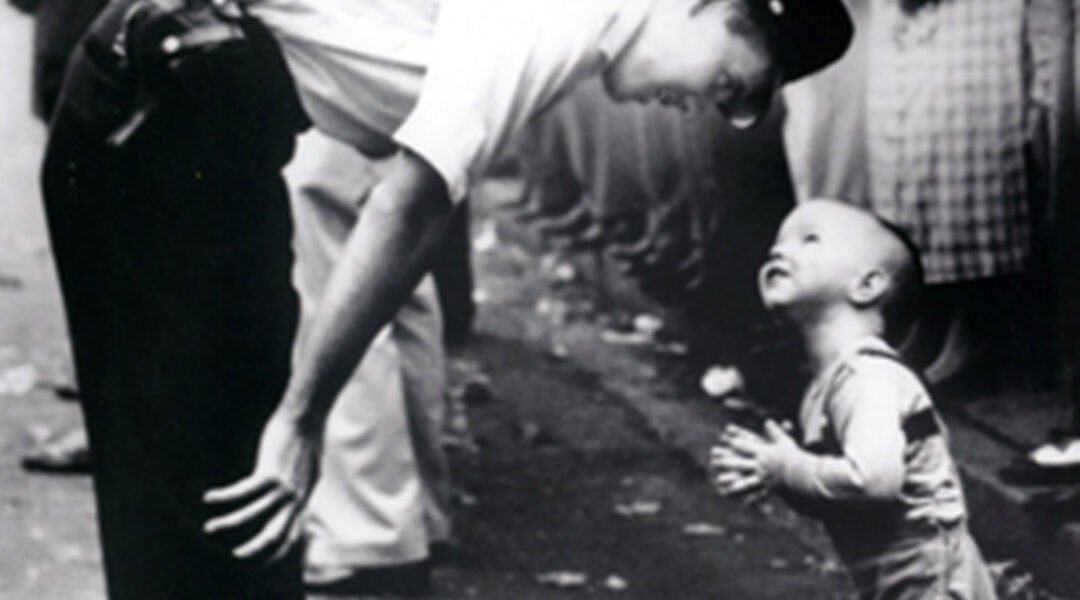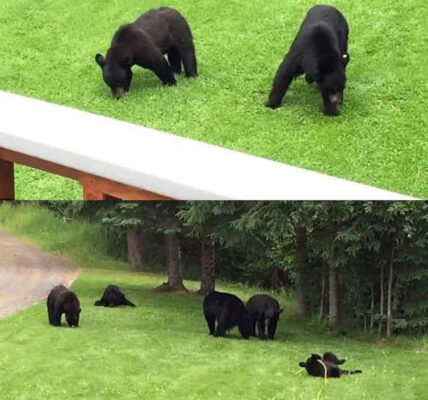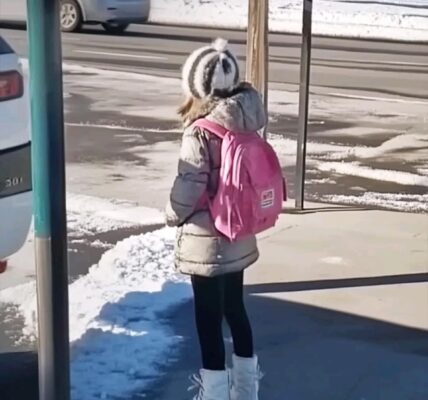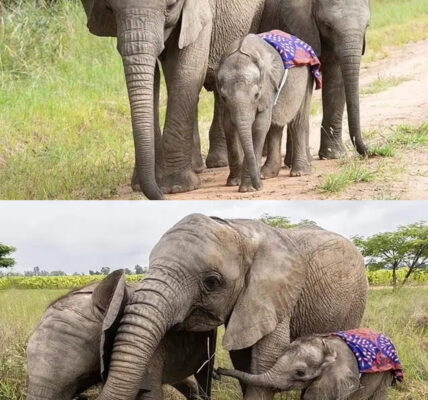
On September 10, 1957, Washington D.C. was alive with music, color, and rhythm. The Chinese Merchants Association had organized a grand parade, and the streets were lined with people—men in crisp suits, women in patterned dresses, children tugging at their parents’ hands, all eager for the spectacle of lion dances and drums echoing through the air.
Photographer William C. Beall of the Washington Daily News was among the crowd, his assignment clear: capture the energy of the parade. His eyes scanned the procession—vibrant costumes, swirling movements, and traditions brought to life in the heart of the city. His lens followed the dancers and musicians, but it wasn’t the parade that gave him the shot of his career.
It was something far simpler.
From the corner of his eye, Beall noticed a little boy, perhaps no more than two or three years old. Dressed in overalls and tiny white shoes, the child had wandered away from the safety of the sidewalk, his small frame drawn forward by the hypnotic charm of the lion dance.
His eyes were wide with wonder, his whole being captivated by the magic before him.

But just as quickly as he stepped forward, a tall figure bent down to meet him. A policeman, towering over the boy yet softening his posture, leaned in to explain why it wasn’t safe to stand in the street. His gun hung heavy at his side, but his face carried only patience and kindness.
The little boy tilted his head upward, hands clasped together as though in prayer or earnest plea, his innocent face fixed on the officer. And in that instant—a towering symbol of authority stooping down to meet the gaze of childlike innocence—Beall saw it.
“Suddenly, I saw the picture,” Beall later recalled. “I aimed my camera, and I clicked.”
The shutter snapped, freezing forever a moment that spoke volumes without a single word.
The photograph, later titled Faith and Confidence, would go on to win the Pulitzer Prize in 1958.
More than a parade photo, it became an enduring symbol of trust, innocence, and the bridge between generations. It showed not just a policeman and a child, but the delicate dance of authority and vulnerability, protection and curiosity, power and gentleness.
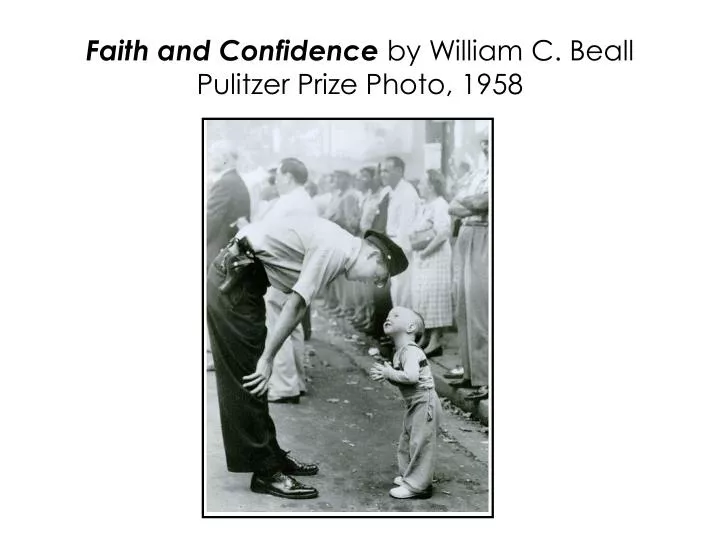
Decades later, the image still resonates. Viewers don’t see just a parade or a city street. They see humanity distilled into a single frame: a child believing, without hesitation, that the world is kind, and an officer choosing, in that fleeting moment, to meet that trust with gentleness instead of indifference.
That is why this photograph endures—not as a piece of news, but as a piece of timeless truth.
Because long after the drums faded and the lion dance ended, one boy’s innocent gaze and one officer’s patient smile remained etched in history.
